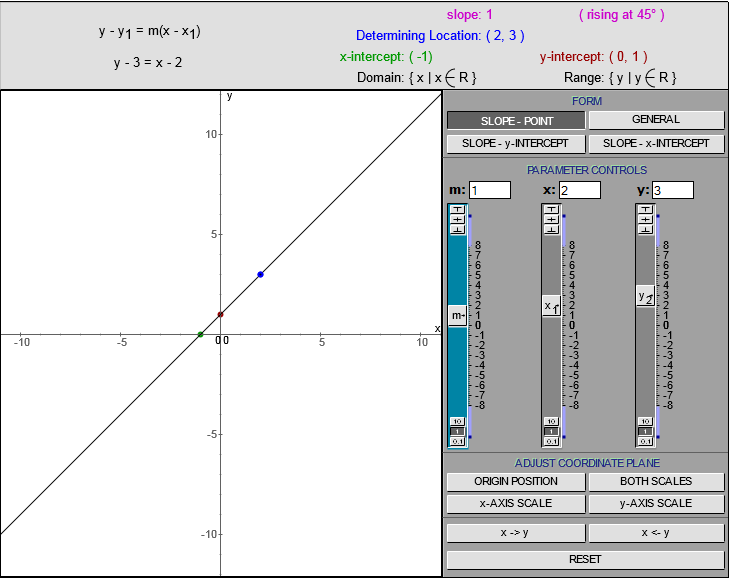
Problem
1. Explain why f: 6x - 2y = 8 is a function, and write it using function notation.
2. Evaluate the function for the arguments { -5, Q, 2x + 1 }.
3. Graph y = f(x) and use the vertical line test to verify it is a function.
4. State the domain and range of the function f.
Solution
1. Explain why f: 6x - 2y = 8 is a function, and write it using function notation.
Begin by solving for y in relation f: 6x - 2y = 8. The result is y = 3x + 4.
y = 3x + 4 is a function since any value substituted into x yields exactly one value as a result. y = 3x + 4 can be written using function notation as f(x) = 3x + 4.
2. Evaluate the function for the arguments { -5, Q, 2x + 1 }.

f(x) = 3x + 4 Let x = Q.
f(Q) = 3( Q ) + 4
f(Q) = 3Q + 4
f(x) = 3x + 4 Let x be replaced by 2x + 1.
f(2x + 1) = 3(2x + 1) + 4
f(2x + 1) = 6x + 3 + 4
f(2x + 1) = 6x + 7
3. Graph y = f(x) and use the vertical line test to verify it is a function.
 Image onlyInstructions text as in global.js
Image onlyInstructions text as in global.js
The vertical line test: If a vertical line can be drawn anywhere in the coordinate plane so that it intersects the graph of a relation at more than one location, then the relation is NOT a function.
In this example, a vertical line always intersects the graph of the relation at exactly one location (see the illustration below). As a result, the vertical line test indicates that the relation f (6x - 2y = 8) is a function.
4. State the domain and range of the function f.
Since any real number multiplyed by three with four then added to it results in another real number, the domain of function f is the real numbers.
Domain of f: { x | x ∈ R }
Graphically the domain can be "viewed" by imagining a vertical line moving right or left over the graph of the function (see the illustration above). Where the vertical line intersects the graph of the function, an x-value which is part of the domain of the function occurs. Where the vertical line does NOT intersect the graph of the function, an x-value occurs (based on the horizontal position of the line) which is NOT part of the domain of the function.
In this example, no matter where a vertical line is drawn it intersects the graph of the function. This indicates that the domain of the function is the Real Numbers.
Since the reverse procedure of subtracting four from any real number, then dividing the result by three also results in another real number, the range of function f is the real numbers.
Range of f: { y | y ∈ R }
Graphically the range can be "viewed" by imagining a horizontal line moving up or down over the graph of the function (see the illustration below). Where the horizontal line intersects the graph of the function, a y-value which is part of the range of the function occurs. Where the horizontal line does NOT intersect the graph of the function, a y-value occurs (based on the vertical position of the line) which is NOT part of the range of the function.
In this example, no matter where a horizontal line is drawn it intersects the graph of the function. This indicates that the range of the function is the Real Numbers.




